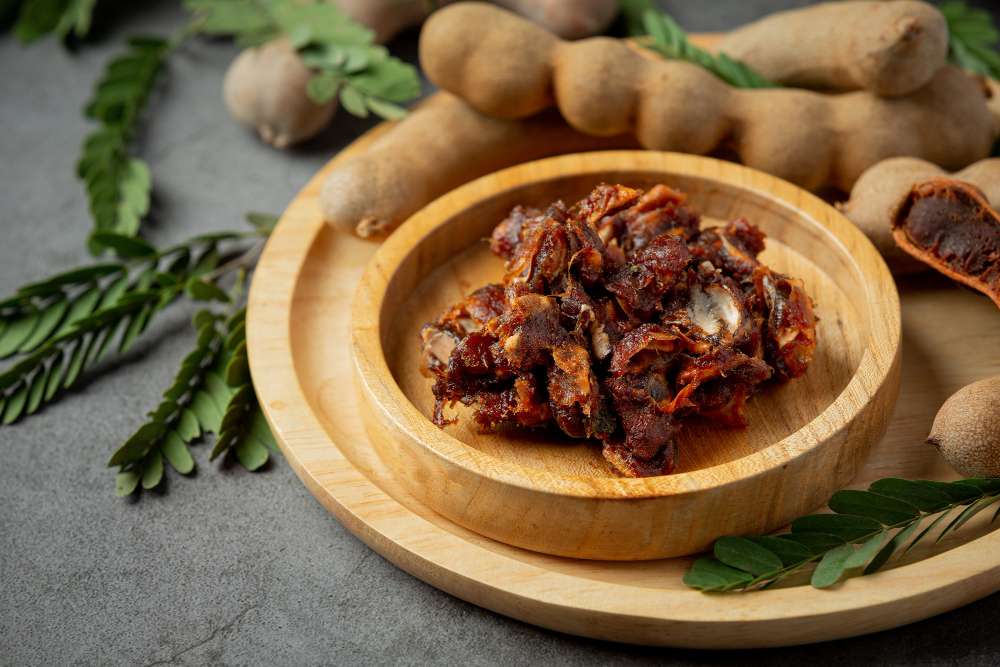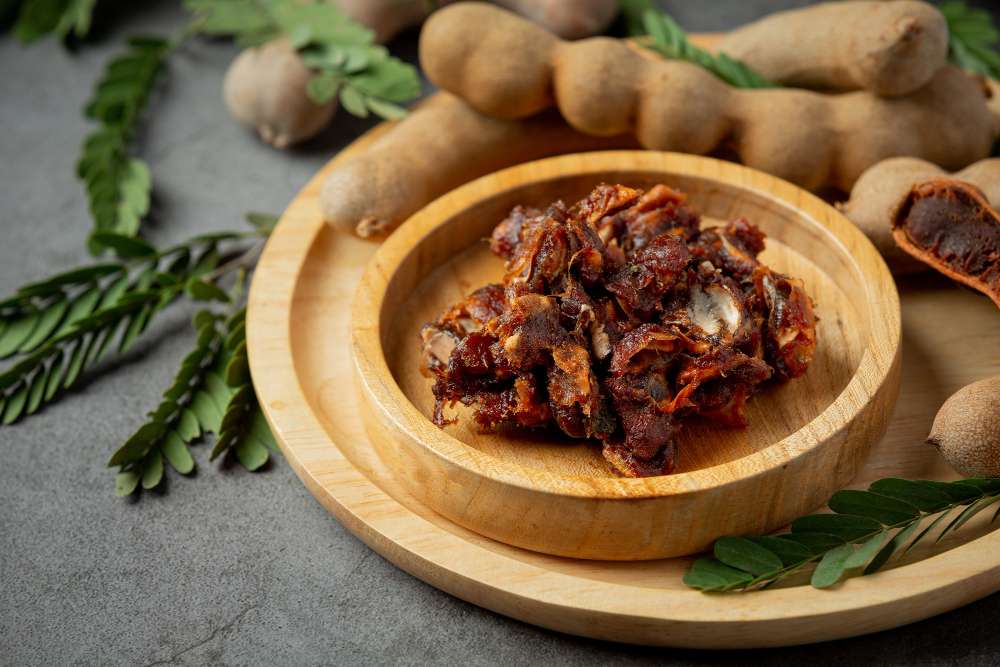Introduction
Tamarind paste, a dark, sticky substance extracted from the tamarind pod, adds a unique sweet and sour punch to countless dishes across the globe. From tangy Indian curries to smoky Mexican salsas, its complex flavor profile is a culinary chameleon. However, finding this exotic ingredient can be a challenge. Maybe your local grocery store doesn’t stock it, or perhaps you’re simply curious about alternatives.
Fear not, fellow food adventurers! The world of culinary substitution offers a range of options to capture the essence of tamarind paste in your dishes. While there’s no single “perfect” replacement, understanding the different substitutes and their strengths will help you find the ideal fit for your recipe. Let’s embark on a flavor exploration as we delve into the world of tamarind paste alternatives.

In the next section, we’ll delve deeper into the reasons why finding a perfect substitute can be tricky and explore the various categories of substitutes based on their focus, be it acidity, sweetness, or a combination of both. By understanding these categories, you’ll be well-equipped to choose the right swap for your culinary creation.
II. The Search for a Substitute: A Balancing Act
Finding a perfect substitute for tamarind paste can be like searching for a culinary unicorn. Tamarind paste’s magic lies in its unique balance of sweet and sour notes. Some substitutes may excel at replicating the acidity, while others might capture the sweetness. The key lies in understanding these distinctions and choosing the substitute that best complements your recipe.
Here’s a breakdown of substitutes based on their focus:
- Sweet & Sour Swaps: These options aim to replicate both the tanginess and sweetness of tamarind paste. Examples include lime juice and brown sugar, amchur powder (dried mango powder), and pomegranate molasses.
- Zesty Stand-Ins: If you primarily need the acidity of tamarind paste for a touch of pucker power, consider apple cider vinegar or lemon juice. However, keep in mind that these options lack the sweetness.
- Sweet Alternatives: Date paste or maple syrup can add a touch of sweetness reminiscent of tamarind paste, but they won’t provide any acidity.
In the next section, we’ll explore some of the most popular substitutes in each category, analyzing their strengths and limitations to help you choose the perfect stand-in for your next culinary adventure!
III. Sweet & Sour Swaps: Capturing the Complexity
Now that we’ve explored the different categories of tamarind paste substitutes, let’s dive deeper into the options that aim to capture both the sweet and sour aspects. These are ideal for recipes where the full flavor profile of tamarind paste is desired.

A. The Classic Combo: Lime Juice and Brown Sugar
This readily available duo offers a budget-friendly and versatile substitute. The bright acidity of lime juice cuts through the richness of your dish, while brown sugar adds a touch of sweetness to mimic the complexity of tamarind paste. This combination works well in curries, chutneys, and marinades. However, it’s important to find the right balance between the two ingredients. Start with equal parts lime juice and brown sugar and adjust to taste based on your recipe and desired level of tartness.
B. Amchur Powder: A Tangy Twist from India
Amchur powder, made from dried unripe mangoes, is a popular substitute in Indian cuisine. It offers a similar tangy flavor to tamarind paste, with a slightly different profile. Amchur powder can be used in a one-to-one ratio with tamarind paste in most recipes. However, keep in mind that it lacks the sweetness of tamarind paste. If needed, you can combine amchur powder with a touch of honey or maple syrup to achieve a closer flavor match.
C. Pomegranate Molasses: The Luxurious Option
Pomegranate molasses is perhaps the closest substitute to tamarind paste in terms of both flavor and texture. Made from concentrated pomegranate juice, it offers a sweet and tart profile with a hint of fruitiness that closely mirrors tamarind paste. However, pomegranate molasses can be less readily available and more expensive than other options. If you find it, start by using half the amount of pomegranate molasses compared to tamarind paste, as it can be more potent.
These are just a few examples of sweet and sour substitutes that can replace tamarind paste. In the next section, we’ll explore some options that focus solely on acidity, offering a zesty punch for your recipe.
IV. Zesty Stand-Ins: A Touch of Pucker Power
While the sweet and sour substitutes aim to capture the full complexity of tamarind paste, some recipes might only require the tartness it brings. If you’re looking for a simple way to add a touch of acidity to your dish, these “zesty stand-ins” can be your knight in shining armor.
A. Apple Cider Vinegar: A Tart and Tangy Twist
Apple cider vinegar is a readily available and budget-friendly option. Its sharp acidity can effectively replace the tartness of tamarind paste in savory dishes. However, apple cider vinegar lacks the sweetness of tamarind paste. Consider adding a touch of honey or maple syrup to compensate if sweetness is desired in your recipe. Start with a smaller amount of apple cider vinegar compared to tamarind paste, as it can be quite potent. Taste and adjust gradually until you achieve the desired level of acidity.
B. Lemon Juice: A Classic with Caveats
Lemon juice is another common household ingredient that can provide acidity. It’s a readily available substitute, offering a bright citrusy flavor that can work in some recipes. However, similar to apple cider vinegar, lemon juice lacks the sweetness of tamarind paste. Furthermore, its flavor profile might not be the perfect match for all dishes originally calling for tamarind. If you choose lemon juice, use it sparingly and adjust the recipe as needed to balance the flavor.
These substitutes offer a quick and easy way to add a touch of acidity to your dish. However, they lack the sweetness and depth of flavor that tamarind paste provides. For recipes where sweetness is crucial, the next section will explore some options that focus solely on that aspect.
V. Sweet Alternatives: A Touch of Honeyed Goodness
While most substitutes we’ve explored aim to replicate both the sweet and sour notes of tamarind paste, some recipes might simply need a touch of sweetness to balance other flavors. If acidity isn’t a key element in your dish, these “sweet alternatives” can provide a finishing touch.
A. Date Paste: A Naturally Sweet and Healthy Option
Date paste, made from blended dates, offers a naturally sweet and healthy substitute for the sweetness of tamarind paste. It has a rich, caramel-like flavor that can work well in marinades, sauces, and even desserts. However, date paste lacks the tartness of tamarind paste. If you need acidity, consider pairing it with a touch of lemon juice or apple cider vinegar. Start with a smaller amount of date paste compared to tamarind paste, as its sweetness is more concentrated. Taste and adjust gradually until you achieve the desired level of sweetness.
B. Maple Syrup (or other sweeteners): Use with Caution
Maple syrup, honey, or other liquid sweeteners can add a touch of sweetness reminiscent of tamarind paste. However, use these options with caution. They lack any acidity and can easily over-sweeten your dish. Start with a very small amount of sweetener and taste as you go. These substitutes are best for recipes where sweetness is the primary focus and acidity is not a necessary component.
By understanding the strengths and limitations of each sweet alternative, you can choose the best option to enhance your recipe without overpowering other flavors.
In the next section, we’ll delve into choosing the right substitute for your specific needs, offering tips on adjusting quantities and finding the perfect flavor match!
VI. Choosing the Right Substitute: A Balancing Act
Now that we’ve explored a wide range of substitutes for tamarind paste, it’s time to navigate the exciting (and sometimes confusing) world of choosing the right one for your recipe. Here are some tips to guide you:
- Consider the Recipe: Analyze the role of tamarind paste in your dish. Is it there primarily for acidity, sweetness, or a combination of both? Matching the recipe’s requirements with the strengths of the substitute will lead you in the right direction.
- Flavor Profile: Think about the overall flavor profile of your dish. Some substitutes, like amchur powder, offer a slightly different tang than tamarind paste. Consider whether this will complement the other ingredients in your recipe.
- Start Small & Adjust: When using any substitute, begin with a smaller amount than what the recipe calls for with tamarind paste. Taste and adjust gradually. Remember, you can always add more, but subtracting flavor is a trickier task!
For example, if your recipe calls for 1 tablespoon of tamarind paste and you’re opting for the lime juice and brown sugar combo, start with 1 tablespoon of lime juice and ½ tablespoon of brown sugar. Taste and adjust the sweetness and acidity based on your preference.
Remember, there’s no single “perfect” substitute. Experimentation is key! With a little practice and the knowledge you’ve gained from this exploration, you’ll be well-equipped to choose the right substitute and conquer any recipe that calls for tamarind paste.
Ready to unleash your culinary creativity? Go forth and substitute with confidence!
VII. Conclusion: A World of Flavorful Possibilities
The quest for the perfect tamarind paste substitute can be an exciting adventure! While there’s no single replacement that captures every nuance of this unique ingredient, the vast array of options empowers you to tailor your dishes to your taste and available ingredients.
From the budget-friendly lime juice and brown sugar combo to the luxurious pomegranate molasses, each substitute offers a distinct way to enhance your culinary creations. The zesty apple cider vinegar and lemon juice bring a touch of pucker power, while the naturally sweet date paste adds a touch of honeyed goodness.
Remember, the key lies in understanding the strengths and limitations of each substitute and choosing the one that best complements your recipe. Don’t be afraid to experiment! Adjust quantities, combine substitutes, and have fun exploring the world of flavors.
So, the next time you encounter a recipe calling for tamarind paste, fear not! With the knowledge you’ve gained, you’re well-equipped to find the perfect substitute and embark on a delicious culinary journey. Happy cooking!
